manual for kenmore 385 sewing machine
- by blaise
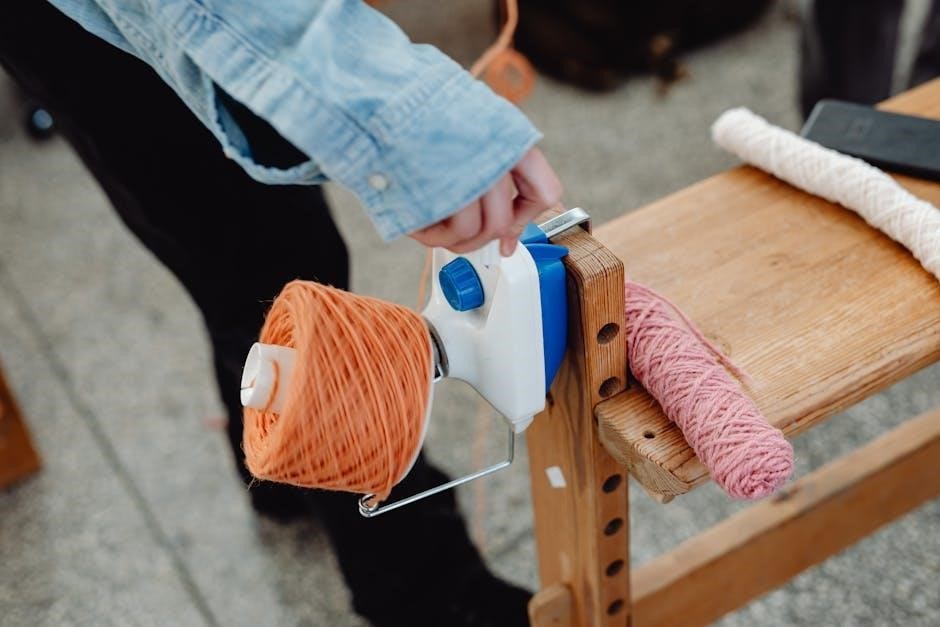
The Kenmore 385 Sewing Machine is a versatile and durable sewing solution designed for both beginners and experienced sewers. This comprehensive guide helps users understand its features, operation, and maintenance, ensuring optimal performance and longevity.
1.1 Overview of the Kenmore 385 Sewing Machine
The Kenmore 385 Sewing Machine is a versatile and user-friendly appliance designed for a wide range of sewing tasks. It combines durability with advanced features, making it suitable for both beginners and experienced sewers. The machine offers a variety of built-in stitches, adjustable tension, and stitch length settings, allowing for precise control over sewing projects. Its compact design and easy-to-use interface make it a practical addition to any sewing workspace. The Kenmore 385 is known for its reliability and consistent performance, making it a popular choice for crafting, repairing, and creating custom fabrics. This overview provides a foundation for understanding the machine’s capabilities and how to maximize its potential.
1.2 Importance of the User Manual
The user manual for the Kenmore 385 Sewing Machine is an essential resource for understanding its features, operation, and maintenance. It provides detailed instructions for setting up the machine, threading, and troubleshooting common issues. The manual also includes step-by-step guides for using built-in stitches and adjusting settings like tension and stitch length. By following the manual, users can ensure optimal performance and extend the machine’s lifespan. It also covers safety precautions and maintenance tips, helping users avoid potential damage. Whether you’re a beginner or an experienced sewer, the manual is a comprehensive guide to unlocking the machine’s full potential and achieving professional-quality results.
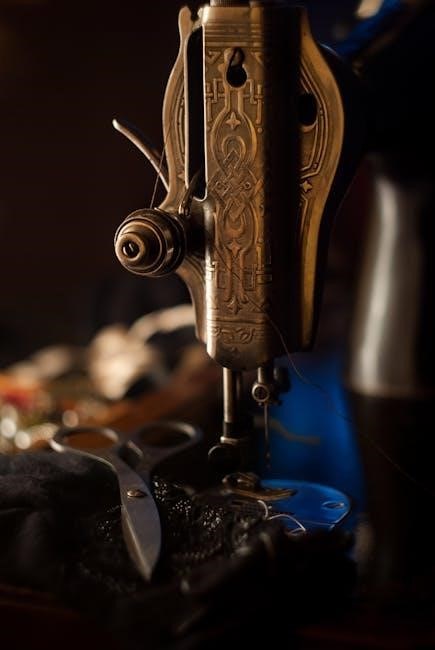
Safety Precautions
Safety precautions are essential when using the Kenmore 385 Sewing Machine. Always keep children away, avoid loose clothing, and ensure the machine is on a stable surface.
2.1 General Safety Guidelines
Always read the manual carefully before using the Kenmore 385 Sewing Machine. Ensure children are kept away from the machine while in operation. Avoid wearing loose clothing or jewelry that could get caught. Keep long hair tied back and avoid distractions. Place the machine on a stable, flat surface to prevent accidents. Never leave the machine unattended while it is in use. Avoid touching sharp parts like needles and scissors. Use only recommended accessories and attachments. Follow the manufacturer’s guidelines for threading and sewing. Regularly inspect the machine for any damage or wear. Proper maintenance ensures safe and efficient operation.
2.2 Electrical Safety Tips
Use the Kenmore 385 Sewing Machine with a properly grounded power source to prevent shocks. Avoid exposing the machine to water or moisture, as this can cause electrical hazards. Never touch electrical components with wet hands. Keep cords away from hot surfaces or sharp objects to prevent damage. Unplug the machine when not in use or during maintenance. Avoid overloading the power outlet with multiple devices. If the machine experiences an electrical malfunction, do not attempt repairs yourself—contact a professional. Always follow the manufacturer’s electrical specifications to ensure safe operation. Proper electrical care extends the machine’s lifespan and protects against potential risks.
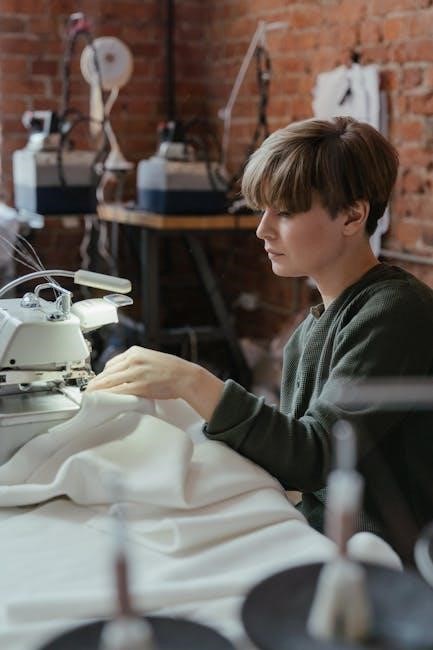
Parts and Accessories
The Kenmore 385 Sewing Machine features essential parts like the power cord, foot pedal, and presser feet. Accessories include bobbins, needles, and optional attachments for versatility.
3.1 Identifying Key Components of the Machine
The Kenmore 385 Sewing Machine consists of several key components essential for its operation. The main body houses the internal mechanism, while the power cord and foot pedal control the machine’s power and speed. The spool pins and bobbin winder are crucial for threading and managing the thread supply. The stitch selector allows users to choose from various stitch patterns, and the tension dials adjust the thread tightness. Additionally, the presser foot holds fabric in place, and the needle performs the stitching. Understanding these components is vital for proper setup and operation, as outlined in the user manual.
3.2 Understanding Sewing Machine Accessories
The Kenmore 385 Sewing Machine comes with a variety of accessories designed to enhance sewing efficiency. These include extra needles, bobbins, and presser feet, each serving specific functions. The zipper foot and blind hem foot are ideal for specialized tasks, while interchangeable presser feet cater to different fabric types. Additional accessories like thread spools and seam rippers are essential for routine operations. Proper use of these accessories ensures smooth stitching and fabric handling. Refer to the user manual for detailed instructions on utilizing each accessory effectively to maximize the machine’s capabilities and achieve professional-quality results in your sewing projects.
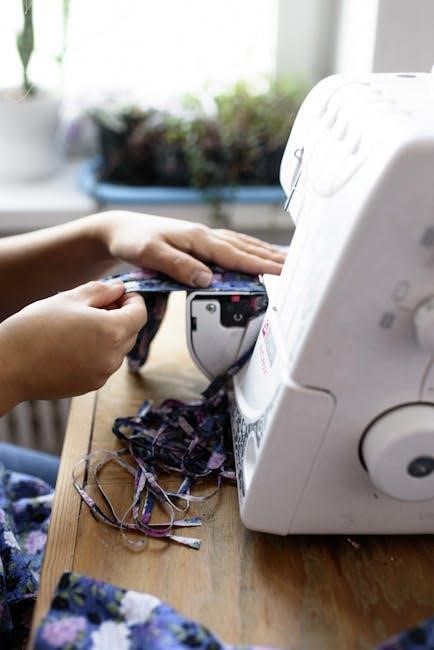
Threading the Machine
Threading the Kenmore 385 Sewing Machine involves inserting the spool, pulling thread through guides, and cutting excess. Proper tension ensures smooth stitching and prevents tangles.
4.1 Threading the Upper Thread
Threading the upper thread on the Kenmore 385 Sewing Machine is a straightforward process. Start by placing the spool on the spool pin and pull the thread through the first guide. Gently pass it through the tension discs, ensuring it’s seated properly. Next, loop the thread around the take-up lever and guide it through the remaining thread guides. Finally, insert the thread through the needle’s eye from front to back. Leave a small tail and cut excess thread. Proper threading ensures even tension and prevents stitching issues. Always refer to the manual for specific guidance and troubleshooting tips.
4.2 Threading the Bobbin
Threading the bobbin on the Kenmore 385 Sewing Machine requires careful attention to ensure proper stitching. Begin by winding the bobbin evenly with the desired thread, avoiding overfilling. Remove the bobbin from the winder and cut the thread. Locate the bobbin case and insert the bobbin, ensuring it seats securely. Pull the thread gently to create a small loop, then guide it through the bobbin case slot. Replace the bobbin case into the machine, making sure it clicks into place. Leave a short tail for sewing. Proper bobbin threading is essential for balanced stitches and smooth operation. Follow the manual’s visual guide for accurate placement and tension adjustment.
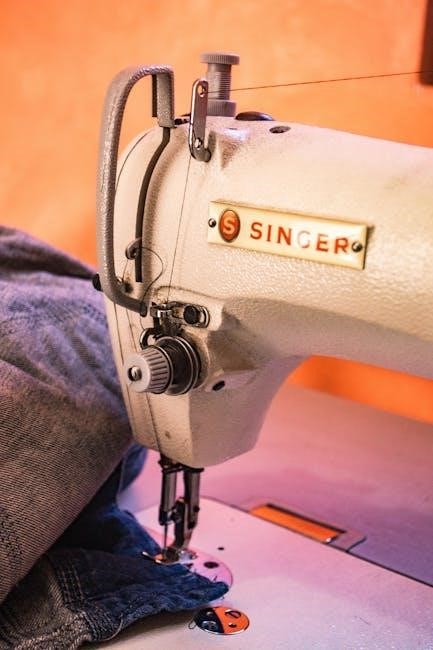
Basic Sewing Operations
This section covers setting up the machine, sewing straight stitches, and basic adjustments for consistent results. Follow manual guidance for proper fabric handling and smooth operation.
5.1 Setting Up the Machine for First Use
Before using your Kenmore 385 Sewing Machine, ensure it is properly set up. Start by carefully unpacking and placing the machine on a stable surface. Plug in the power cord and familiarize yourself with the controls. Thread the machine according to the manual’s guidance, ensuring the upper thread and bobbin are correctly installed. Check that all accessories, such as the presser foot and needle, are securely in place. Refer to the manual for specific instructions on tension adjustment and stitch selection. Proper setup ensures smooth operation and prevents potential issues. Always follow safety guidelines and manufacturer recommendations for optimal performance.
5.2 Sewing Straight Stitches
To sew straight stitches on your Kenmore 385 Sewing Machine, start by selecting the straight stitch option, usually marked as stitch number 1. Ensure the fabric is placed evenly under the presser foot, aligning the edge with the machine’s guide. Gently hold the fabric with both hands, keeping it taut but not stretched. Slowly press the foot pedal to begin sewing, maintaining a steady pace. Use the handwheel to manually lower the needle if needed. Keep the fabric moving smoothly without pulling or pushing too hard, as this can cause uneven stitches. Always use the appropriate presser foot for straight stitching to ensure precise results. Proper tension settings are crucial for consistent stitches.
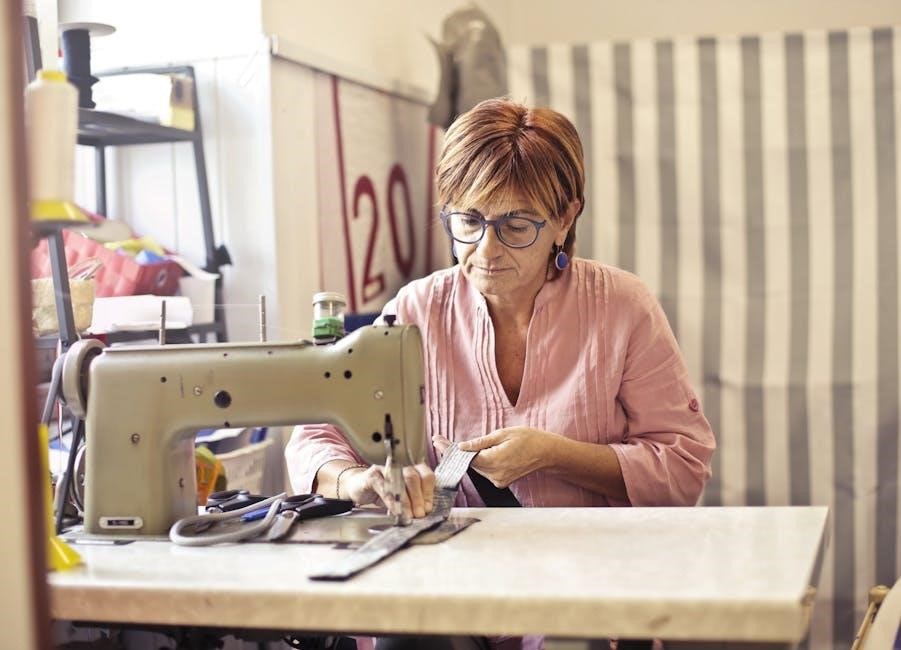
Advanced Features
The Kenmore 385 Sewing Machine offers built-in stitches and customizable settings for enhanced creativity. Adjust tension and stitch length to tailor projects, ensuring precise results for various fabrics and techniques.
6.1 Using Built-in Stitches
The Kenmore 385 Sewing Machine features a variety of built-in stitches, including straight, zigzag, and decorative options. To use these stitches, simply turn the stitch selector dial to choose your desired pattern. The machine allows for easy customization, enabling you to adjust stitch length and width according to your fabric type and sewing needs. For delicate fabrics, use the finer stitches, while heavier materials may require stronger, wider stitches. The automatic needle threader simplifies the threading process, ensuring accurate stitch formation. Always refer to the step-by-step guide in the manual for troubleshooting and optimizing stitch quality. This feature enhances creativity and precision in your sewing projects.
6.2 Adjusting Tension and Stitch Length
Properly adjusting the tension and stitch length on your Kenmore 385 Sewing Machine is crucial for achieving professional results. The upper thread tension can be adjusted using the dial located on the front of the machine. For most fabrics, the middle tension setting works best, but heavier materials may require a tighter setting. The stitch length can be controlled using a separate dial, allowing you to choose between short, medium, or long stitches. Always test your settings on a scrap piece of fabric before sewing your final project. Refer to the manual for specific guidelines on adjusting these settings for different fabric types and stitches. Proper adjustment ensures even stitching and prevents fabric puckering or loose threads.
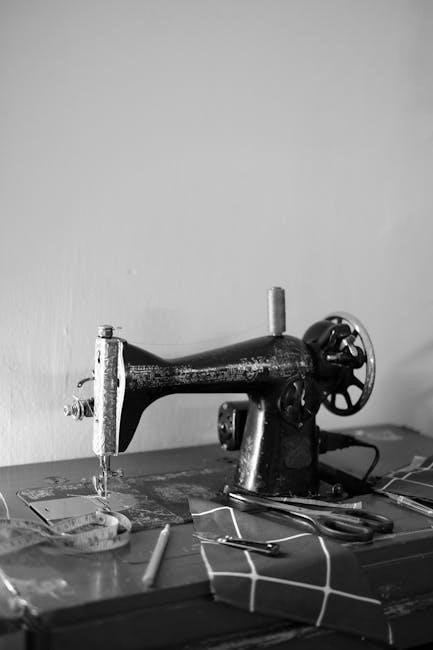
Maintenance and Cleaning
Regular maintenance of your Kenmore 385 sewing machine involves cleaning lint and debris, lubricating moving parts, and performing routine checks. Refer to the manual for detailed instructions to ensure optimal performance and longevity.
7.1 Cleaning the Sewing Machine
Regular cleaning of the Kenmore 385 sewing machine is essential to maintain its performance and longevity. Start by turning off and unplugging the machine to ensure safety. Use a soft-bristle brush or a clean, dry cloth to remove lint, dust, and debris from the exterior and interior components. Pay special attention to the bobbin area, tension discs, and stitch plate, as these areas tend to accumulate the most lint. For stubborn lint, gently use compressed air, but avoid spraying liquids or harsh chemicals, as they may damage the machine. Clean the machine after each project to prevent buildup and ensure smooth operation. Always refer to the manual for specific cleaning instructions tailored to your Kenmore 385 model.
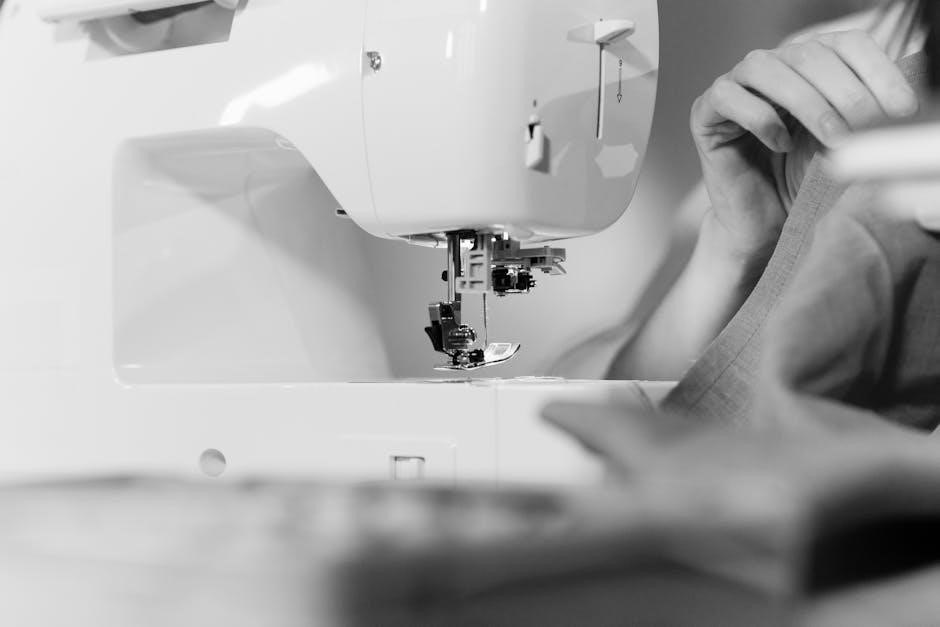
7.2 Lubricating the Machine
Lubricating the Kenmore 385 sewing machine is essential to ensure smooth operation and prevent mechanical wear. Use high-quality sewing machine oil, as specified in the manual, to lubricate moving parts. Apply a few drops to the bobbin hook area, feed dogs, and any visible gears. Avoid over-lubrication, as excess oil can attract lint and dust, leading to maintenance issues. After lubricating, run the machine without fabric to distribute the oil evenly. Regular lubrication extends the machine’s lifespan and maintains stitch quality. Always refer to the manual for specific lubrication points and frequency recommendations tailored to your Kenmore 385 model to keep it functioning optimally. Proper lubrication ensures years of reliable service.
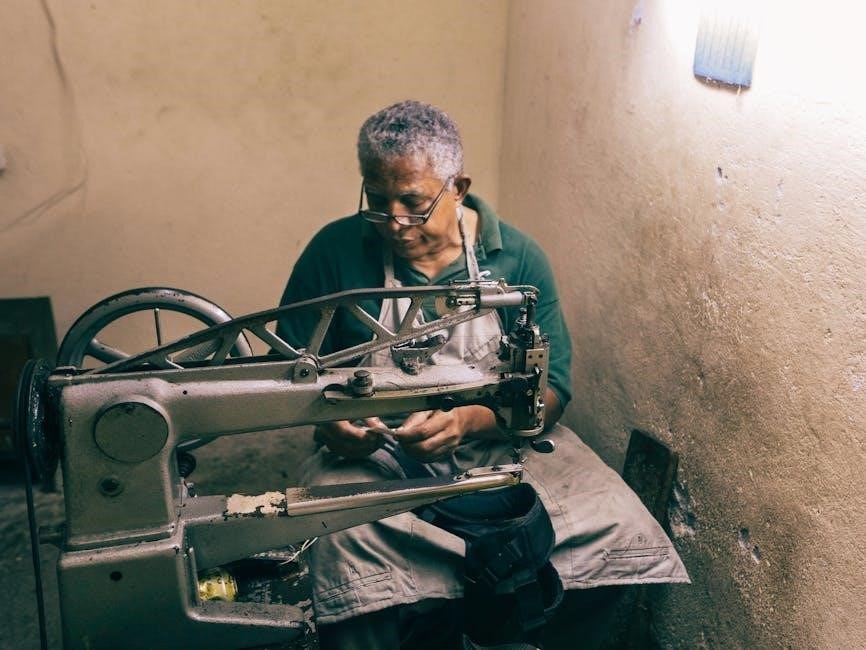
Troubleshooting Common Issues
Identify and resolve issues like uneven stitches or machine jams by checking thread tension, clearing debris, and ensuring proper bobbin alignment. Regular maintenance prevents such problems.
8.1 Common Problems and Solutions
Common issues with the Kenmore 385 Sewing Machine include thread bunching, uneven stitches, and machine jams. To address these, ensure proper thread tension, check for tangled bobbin threads, and clean debris from the machine. If stitches are uneven, verify that the needle is correctly threaded and the bobbin is properly seated. For jams, gently remove fabric and clear any blockages. Regularly oiling the machine and dusting internal parts can prevent mechanical issues. Always refer to the manual for specific troubleshooting steps to avoid further damage. Proper maintenance and adherence to guidelines can resolve most common problems effectively.
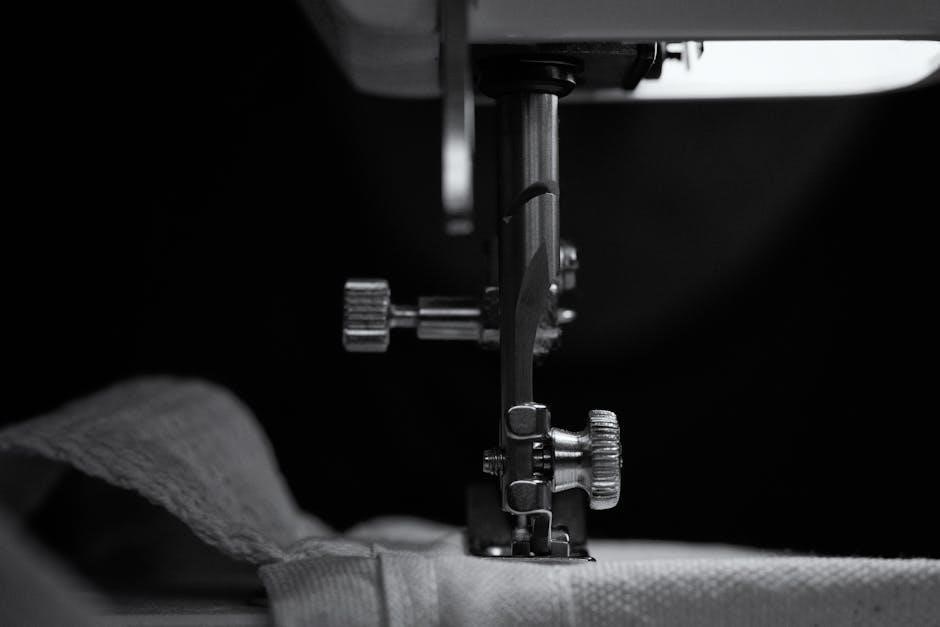
8.2 Resetting the Machine
Resetting the Kenmore 385 Sewing Machine can resolve issues like error codes or unresponsive controls. To reset, unplug the machine from the power source and let it sit for 10-15 minutes. This allows the internal electronics to reset. Plug it back in and test basic functions. If problems persist, refer to the user manual for specific reset procedures or consult a professional. Regular resets can prevent software glitches and ensure smooth operation. Always follow safety guidelines when handling electrical components. Resetting is a simple yet effective way to restore functionality without complex troubleshooting.
Mastery of the Kenmore 385 Sewing Machine begins with understanding its features and proper care. Regular maintenance and troubleshooting ensure longevity and optimal performance. This comprehensive guide provides the tools to unlock your machine’s full potential and enhance your sewing experience.
9.1 Final Tips for Optimal Use
For the best experience with your Kenmore 385 Sewing Machine, always refer to the user manual for specific guidance. Regular cleaning and lubrication are essential to maintain smooth operation. Use the correct needles and threads for your fabric type to avoid damage. Keep the machine on a stable surface and ensure proper ventilation. Store the machine in a dry place when not in use. Experiment with built-in stitches on scrap fabric before sewing actual projects. Follow the manual’s troubleshooting section for common issues. By adhering to these tips, you can extend the machine’s lifespan and achieve professional-grade results in your sewing projects.
9.2 Importance of Regular Maintenance
Regular maintenance is crucial for ensuring the Kenmore 385 Sewing Machine operates efficiently and lasts for years. By cleaning and lubricating the machine as recommended, you can prevent mechanical issues and ensure smooth stitching. Always check for loose parts and tighten them if necessary. Dust and lint buildup can hinder performance, so frequent cleaning is essential. Proper care also extends the machine’s lifespan and maintains its precision. Consistent upkeep ensures your sewing projects are completed with professional-quality results. Refer to the manual for specific maintenance schedules and procedures to keep your Kenmore 385 in optimal condition and ready for any sewing task.
Get the Kenmore 385 sewing machine manual for free! Easy-to-follow guide for maintenance, troubleshooting, and creative sewing projects.
Posted in Canada